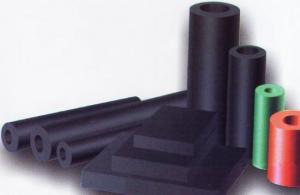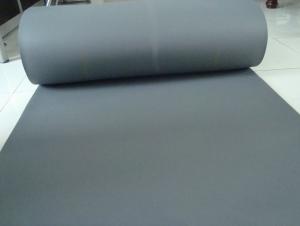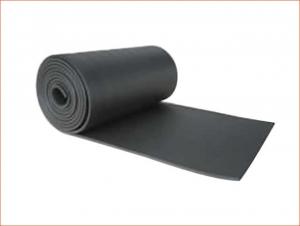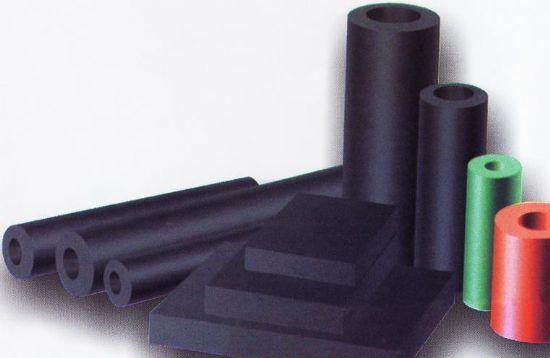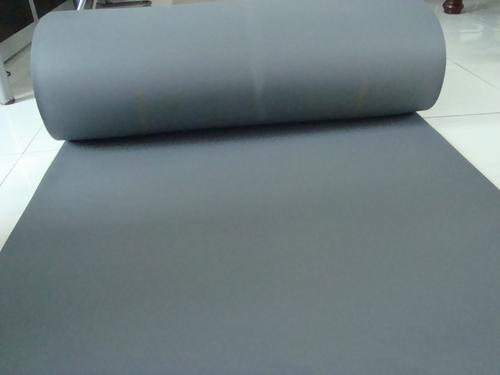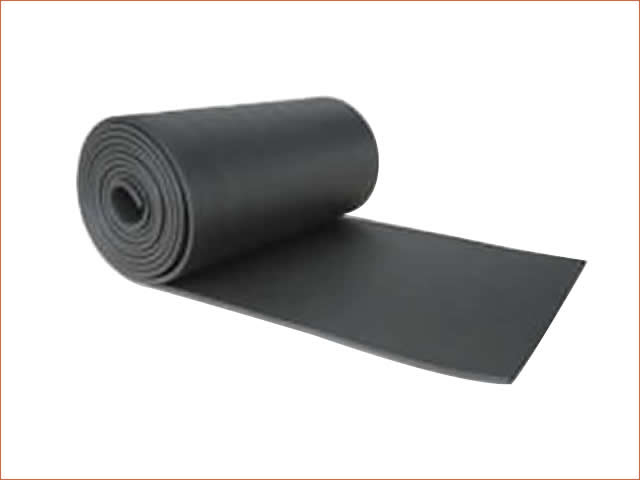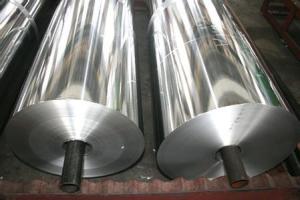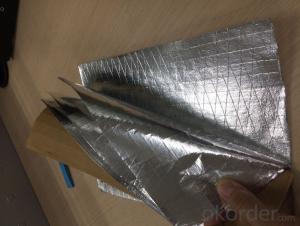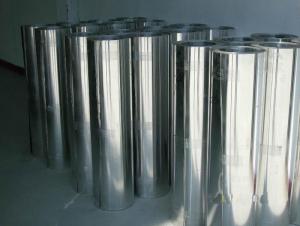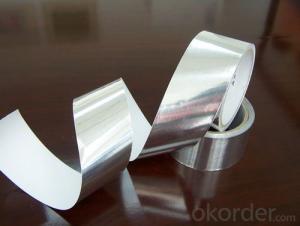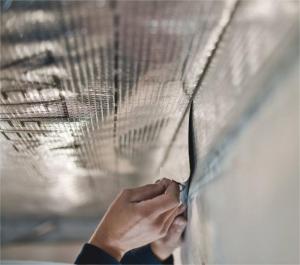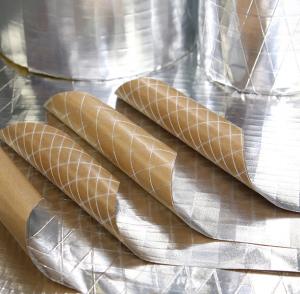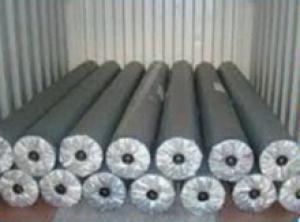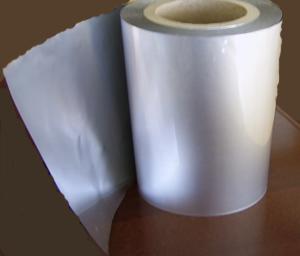High Quality Adhesive Closed Cell Foam with Aluminum Foil Facing
- Loading Port:
- China Main Port
- Payment Terms:
- TT OR LC
- Min Order Qty:
- -
- Supply Capability:
- -
OKorder Service Pledge
OKorder Financial Service
You Might Also Like
Flexible Rubber Plastic Insulation Material
Adhesive Closed Cell Foam High Quality
rubber plastic is a high quality heat-insulating and heat-preservation material which use butyronitrile rubber and polyvinychloride(NBR,PVC) as main raw materials.
The productionprocess includes mixing, tensing and continuous extruding , heating andfoaming, cooling and cutting.
FEATURES
Lower heat-conductivity
Higher fire-blockingperformance
Damp-proof andWater-proof
Softness
Neat and
Easy to installeasy handing and storage
Good flexibilityand tenacity
RUBBER PLASTIC SHEET
Standard Size
Density(kg/m3) | 40-90 | ||||
Thickness(mm) | 10 mm | 15 mm | 20 mm | 25 mm | 30 mm |
Length (m) | 20 | 20 | 10 | 10 | 10 |
Width (m) | 1.5 | 1.5 | 1.5 | 1.5 | 1.5 |
Remark: Othersized are available upon request. Other colors are available at customers request.
Application
rubber plastic arewidely used in sound isolation of wall planking, sound absorption in air ducts,and sound absorbing decorations in entertainment spaces. It can also be usedfor shock resistance and pressure relief in instruments and equipment.
TechnicalParameters
Item | Specification | Standard |
Density(kg/m3) | 40-90 | GB/T 6343 |
Temperature(℃) | -40~110 | GB/T 17794 |
Flammability | Class B | GB/T 8624-2006 |
Class 0 | BS 476Part7∝Part6 | |
Oxygen index (%) | ≥40 | GB/T 2406 |
SDR | ≤65 | GB/T8627-1999 |
Conductivity factor Average temperature | ≤0.031 | GB/T 10294 |
Water vapor permeability (%) | ≥1.0x104 | GB/T 17146-1997 |
≤1.96x 10-11 | ||
Water absorption ratio in vacuum (%) | ≤10 | GB/T 17794-2008 |
Dimension stability(N/cm) | ≤10 | GB/T 8811 |
Crack resistance | ≥2.5 | GB/T 10808 |
Compression resilience ratio (%) | ≥70 | GB/T 6669 |
Anti-ozone | No cracking | GB/T 7762 |
Ageing-resistance | Slightly crumpling, no cracks no pin holes, not deforming | GB/T 16259 |
Packaging,
Product is packedin cartoon.
RUBBER PLASTIC PIPE
Productintroduction
rubber plastic ismainly applicable to heat insulation of central air-conditioner system,refrigerator room and pipes of all kinds of refrigeration equipment and heatingequipment.
Standard Size
Copper tube OD inch | Seamless tube OD mm | Galvanized tube DN | ID mm | 9mm Nominal thickness | 15mm Nominal thickness | 20mm Nominal thickness | 25mm Nominal thickness | 30mm Nominal thickness | |||||
mm×mm | piece | mm×mm | piece | mm×mm | piece | mm×mm | piece | mm×mm | piece | ||||
1/4 |
|
| 6 | 6×9 | 180 |
|
|
|
|
|
|
|
|
3/8 |
| 6 | 10 | 10×9 | 140 | 10×15 | 80 | 10×20 | 70 |
|
|
|
|
1/2 |
|
| 13 | 13×9 | 120 | 13×15 | 80 | 13×20 | 50 | <p style="background-color:white;background-position:initial initial;background-repeat:initial initial;text-align:lef | |||
- Q: The user is asking if they can reuse their old aluminum foil facing to create new ones once it becomes worn out.
- <p>No, you cannot create new aluminum foil facings from old, worn-out ones. Aluminum foil facings are typically made from a specific type of aluminum that is bonded to a substrate. Once it wears out, the aluminum layer is compromised and cannot be reused to make new facings. Recycling old aluminum foil is the best option to reduce waste and conserve resources. You can recycle aluminum foil, which will then be processed and turned into new aluminum products.</p>
- Q: Is it possible to use aluminum foil facing material to create a bag for storing food items, specifically sandwiches?
- <p>While it is technically possible to use aluminum foil facing to create a makeshift sandwich bag, it is not recommended for long-term food storage. Aluminum foil is not airtight and does not provide a barrier to bacteria or moisture, which can lead to spoilage. For proper food storage, it's better to use food-safe plastic bags or containers designed for this purpose, which offer better protection against contamination and help maintain freshness.</p>
- Q: What are the distinctions among various food wraps found in stores?
- <p>Yes, there are differences among food wraps available on the market. They vary in material, such as plastic, aluminum foil, parchment paper, and beeswax wraps. Each type has distinct properties: plastic cling wrap is versatile but not microwave-safe; aluminum foil conducts heat well and is reusable but can tear easily; parchment paper is ideal for baking and can withstand high temperatures; and beeswax wraps are eco-friendly, reusable, and can be used in the fridge or freezer but not for high-heat cooking. Each type also differs in terms of environmental impact, cost, and suitability for different food storage and cooking needs.</p>
- Q: Is it safe to use aluminum foil facing to wrap food for cooking methods like roasting or grilling?
- <p>Yes, you can use aluminum foil facing to wrap food before roasting or grilling. Aluminum foil is a common and safe material used in cooking, especially for wrapping foods to retain moisture and flavor. It's important to ensure the foil is food-grade and not damaged, as this can affect the food's safety and taste. When using foil, make sure it's sealed properly to prevent juices from leaking and to keep the food moist. Avoid direct contact with the heat source as much as possible to prevent the foil from burning and potentially releasing any harmful substances into the food.</p>
- Q: Is it safe to use aluminum foil with a reflective side for storing food?
- <p>Yes, aluminum foil facing can be used for food storage. It is commonly used to wrap, cover, or store food in the refrigerator or freezer. The reflective side of aluminum foil is safe for food contact as it is made of a food-grade material. However, it's important to ensure the foil is clean and free from any damage or sharp edges that could puncture other food packaging. It's also advisable to avoid using it in direct contact with acidic or alkaline foods, as this can cause the foil to corrode and potentially release aluminum into the food.</p>
- Q: This question asks for methods to utilize aluminum foil as a tool for preparing quick and easy meals.
- <p>Aluminum foil facing is a versatile tool for quick meal preparation. One method is the 'foil packet' technique, where you place ingredients like vegetables, protein, and seasonings in a foil pouch and bake or grill. This method helps retain moisture and flavor. Another way is to use foil as a makeshift baking tray for items like fish or potatoes, which can be seasoned and wrapped in foil for a one-step cleanup. Foil can also be used to cover food during grilling to prevent flare-ups or to steam vegetables. Always ensure food is cooked thoroughly and be cautious of potential aluminum leaching, especially with acidic foods.</p>
- Q: Is it safe and practical to use aluminum foil with a reflective side to wrap raw meat?
- <p>Yes, you can use aluminum foil facing to wrap raw meat. Aluminum foil is a common and safe material for food packaging, including raw meats. The reflective side of the foil can actually help to keep the meat moist during cooking by reflecting heat. However, it's important to ensure that the foil does not come into direct contact with any open flames as it can cause a fire hazard. Additionally, when using foil for cooking, make sure to poke small holes in it to allow steam to escape, which can help prevent the foil from tearing or the meat from becoming too soggy.</p>
- Q: This question asks for the method to wrap a hot pan using aluminum foil, with specific instructions on how the foil should face.
- <p>To wrap a hot pan with aluminum foil, first ensure the pan is stable and on a heat-resistant surface. Take a large piece of aluminum foil, about twice the size of the pan. Hold one corner of the foil and drape it over the pan, allowing the shiny side to face the pan. Gently press the foil against the pan, working your way around the edges to cover the entire surface. Ensure the foil is snug but not too tight to avoid tearing. The shiny side facing the pan will help reflect heat and protect the pan's surface. Be cautious while handling the hot pan and aluminum foil to avoid burns.</p>
- Q: Is it safe to use old aluminum foil facing as a container for leftovers or dry goods?
- <p>While aluminum foil facing can be used as a temporary solution for storing leftovers or dry goods, it is not recommended for long-term storage. Aluminum foil facing may contain chemicals or coatings that are not food-safe, and it can also react with acidic or alkaline foods, potentially leaching harmful substances. For safe and long-lasting storage, it is best to use containers specifically designed for food storage, such as glass or food-grade plastic containers with airtight seals.</p>
- Q: This question asks for methods to clean the aluminum foil facing, which is a common household material used for cooking and food storage.
- <p>To clean aluminum foil facing, start by removing any visible debris. Use a damp cloth or sponge with mild dish soap to wipe the surface gently. Avoid abrasive materials that could scratch the foil. If there are stubborn stains, you can use a mixture of water and vinegar (1:1 ratio) to dampen the cloth. Wipe the surface and let it air dry. For baked-on food, you can use a plastic scraper or a soft nylon brush to gently remove it. Always remember to handle aluminum foil carefully to prevent tearing or damaging the surface.</p>
Send your message to us
High Quality Adhesive Closed Cell Foam with Aluminum Foil Facing
- Loading Port:
- China Main Port
- Payment Terms:
- TT OR LC
- Min Order Qty:
- -
- Supply Capability:
- -
OKorder Service Pledge
OKorder Financial Service
Similar products
Hot products
Hot Searches
Related keywords
